#true weevil
Explore tagged Tumblr posts
Text
polite black vine weevil i saw last night!
🪲
06/05/2024
2 notes
·
View notes
Text



@greenix submitted: no IDs needed, just wanted to send joy in the form of Hamlet (my milkweed bug) and this top notch weevil! I appreciate you so much and your posts brighten my day in these trying times ♥️
Thank YOU for submitting such nice bugs! This weevil is especially exquisite
127 notes
·
View notes
Text
today's invertebrate........ancyra
do you see a weevil??? do you?????? because if you do, then you've been TRICKED by cheeky ancrya, who loves pretending to be a weevil with his suspiciously weevil shaped wings
everyone thinks they found a lucky weevil when ancyra is around but whoops! it's just good ol ancyra walking backwards as usual
great animal! (photo credit: https://www.flickr.com/photos/rainforests/)


#arthropods#invertebrates#is that a weevil??? no it isn't! it's just ancyra!#insects#hemiptera#planthoppers#true bugs
91 notes
·
View notes
Text
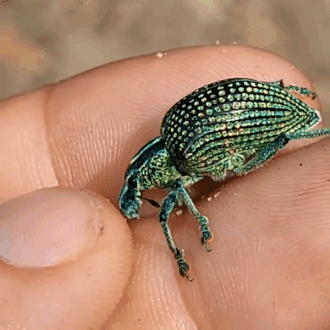

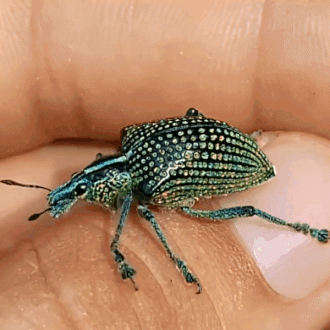
brazillian diamond beetle (entimus imperialis) | source
#stim#bugs#weevils#beetles#sfw#brazillian diamond beetle#entimus imperialis#insects#green#yellow#black#shiny#hands#nature#animals#ishy gifs#postish#true weevils
1K notes
·
View notes
Text

#weevil#weevil time#weevil wednesday#tumblr memes#meme#memes#animal meme#animal memes#animal humor#funnyanimals#funny animals#bug memes#bug meme#best memes#dank memes#dank humor#dankest memes#shitpost#meme humor#funny but true#funny stuff#funny#relatable memes#funny memes#memesdaily#bug appreciation#lol memes#humour#humor#funny shit
74 notes
·
View notes
Text
Now I don’t mind this established trope at all where people are basically ants in the minds of dragons, but then, just once in any fantasy media or campaign I want a dragon or other massive higher creature that responds to the existence to humans in the exact way that I do to bugs.
Dragon that stops flying because it saw someone sleeping in a field and pokes them with a branch out of sheer curiosity to check if they’re dead or not.
Dragon that watches goblins scurry into one of their little huts and just pries the roof off to stare at them and look at the inside of their little shelter before putting it back down with a satisfied grin and leaving.
Dragon that sees a person treading water in the middle of a lake or the ocean, carefully plucks them out, and sets them down on dry land. Maybe puts a goat’s leg in their lap in case they need a snack. Also calls them “Harold” for no apparent reason.
Very young dragon that screams and freaks out upon seeing a bearded man with brightly colored robes and a pointed hat until it realizes the guy isn’t casting any spells. “Ohhhh you’re a wizard mimic” and then proceeds to handle the guy for a few minutes, fascinated. It also addresses the dude as “Craig” the entire time.
Dragon grabs a wild boar and repeatedly starts placing it in front of a town because it wants to see some hunting behavior in action.
Thief gets caught sneaking into a dragon’s lair. Resident reptile roars and is seemingly about to obliterate them when its mate suddenly comes rushing in with a giant cup. They have a grumbly back and forth before the thief is scooped up and promptly brought to be dropped off at the nearest random village. Dragon’s mate refers to the thief as “Sullivan SillyMan” the whole way.
Dragon that encounters a member of a humanoid race it has never heard of or seen before, at least in this region. Stops everything it’s doing and immediately kidnaps the individual. Speeds back to its lair and keeps them imprisoned while trying to flip through some tomes. Eventually drags out a magical item that they use to open a communication with another dragon, describing the prisoner, showing them the prisoner, exchanging friendly banter. There’s a whole 30 minute to and hour convo and everything. Dragon refers to the captive as “Thaddeus” the whole time. Last thing it does is sketch out a drawing of the person before taking them back to where they found them and turning them loose again.
Dragon doing this to a gnome
#dragons#bugs tangentially#dnd plothooks#fantasy ideas#weevil#shitty writing prompts#based on true events#Especially the part where I give them random names#scarlet rambles about things#y’all will write dragons as so knowledge obsessed and smart but with no real scientific passion huh
44 notes
·
View notes
Text

Unknown Weevil (family Curculionidae), and unknown Crab Spider (genus Tharrhalea).
#ljsbugblog#bugblr#entomology#insects#coleoptera#beetles#curculionidae#weevils#true weevils#unconfirmed ID#arachnids#spiders#thomisidae#crab spiders#tharrhalea#macro
53 notes
·
View notes
Text
Uncharismatic Fact of the Day
Though they’re often considered pests, weevils are an inevitable fact of life; they can found on every continent except Antarctica, and are extremely diverse. There are about 97,000 recognized species, of which 83,000 belong to the ‘true weevil’ family Curculionidae, making it one of the largest families in the animal kingdom.

(Image: An elephant weevil (Orthorhinus cylindrirostris) by Grahame Bowland via Wikipedia)
If you like what I do, consider leaving a tip or buying me a ko-fi!
102 notes
·
View notes
Text
EL GORGOJO QUE SE ESCURRIÓ POR LA RENDIJA DE MIS DEDOS
Anoche, antes de acostarme, me encontré un gorgojo entre la ropa recién lavada: apenas 5 mm, obscuro, una prominente trompa; bellísimo y delicado, como todo coleóptero, como lo son también las aves paseriformes, radicales antónimos del ser humano. Lo puse con ternura sobre la palma de mi mano y la cerré con suavidad.

De un estante saqué emocionado una de mis guías de coleópteros para su identificación, y abrí el libro y la mano, pero ni rastro del picudo: se había escurrido por la rendija de mis dedos y me quedé sin saber cuál era su nombre: 5489 géneros y 86100 especies en el mundo, un gorgojo, que por unos segundos me perteneció y leyó mi vida paseándose por las líneas de la palma de mi mano.
[8/II/2024]
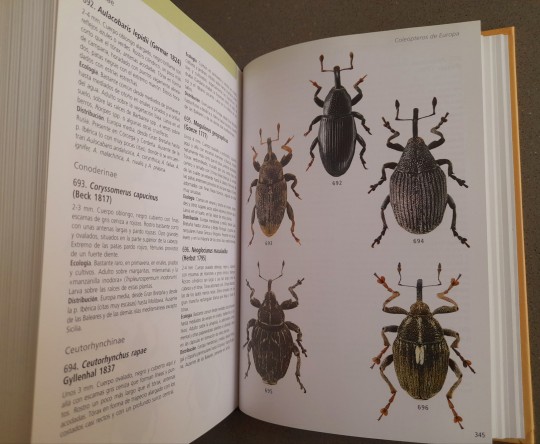
8 notes
·
View notes
Text

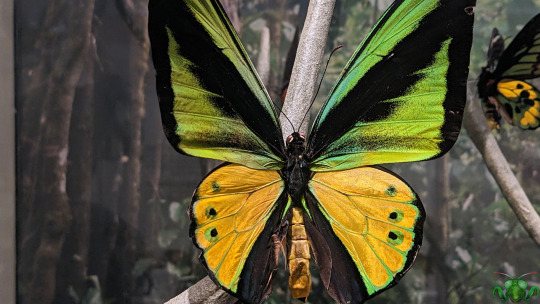
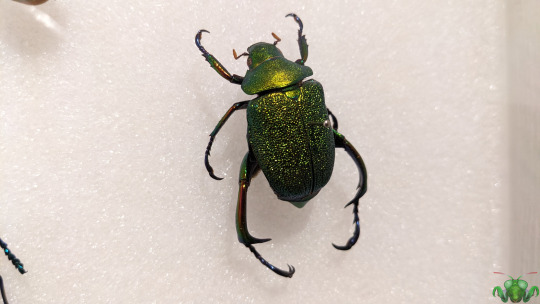


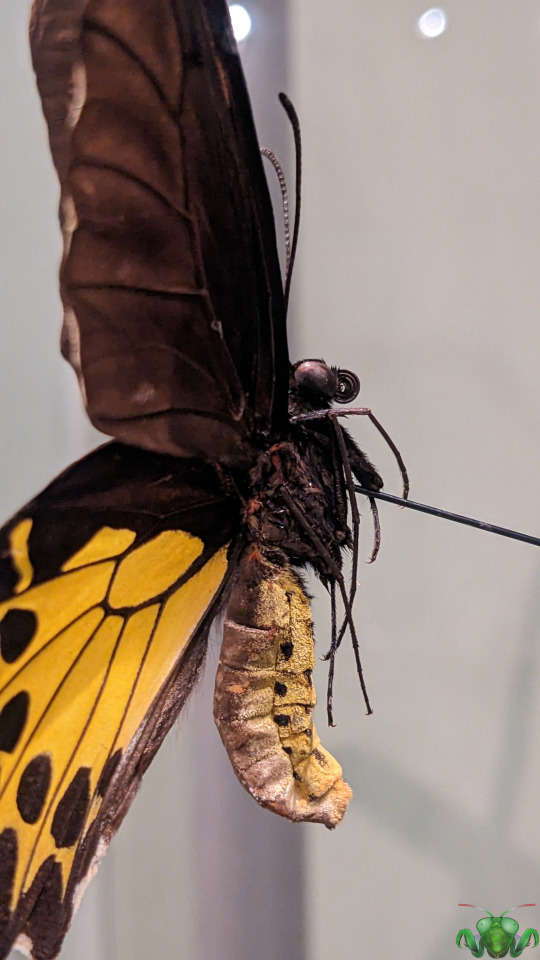



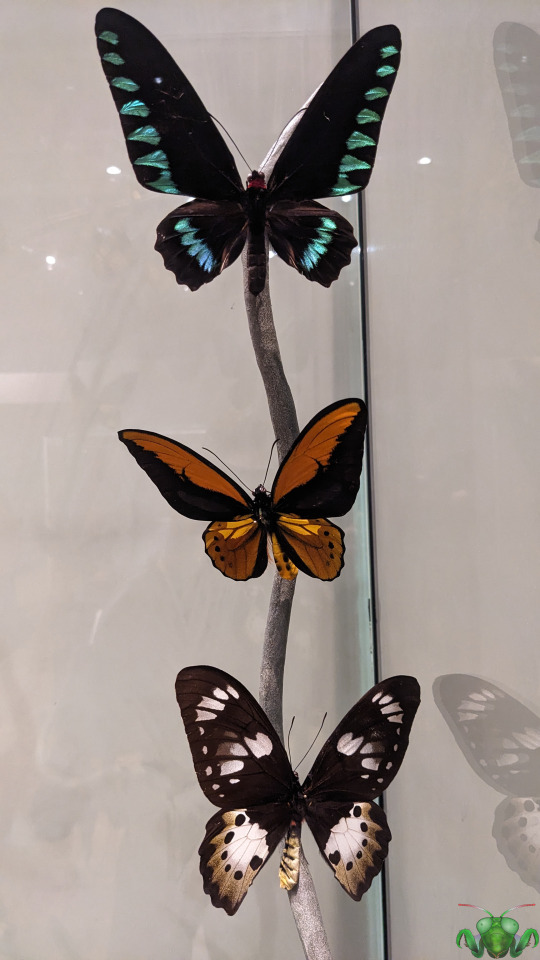
Royal Ontario Museum - Insect Exhibits 2
Good news, I managed to squeeze in one more insect visit to the Royal Ontario Museum before the end of the year! As such the living denizens of the natural history section will be showcased one more time before 2024 is upon us. Before that, I'd like to take a moment to share new pictures from the insect displays within the natural history section. Compared to the pictures from 2019, these are a quantum leap forward in terms of clarity and use of lighting. The Peanut Bug - Fulgora laternaria (Picture 1) has always been a favorite of mine, so I always take the opportunity to go and visit it and marvel at the ridiculousness of the size of that head protuberance. Though a bit oversized, such a head fixature has an important function: knocking it against a tree is its mating call. If the attention they draw is unwelcome, they can startle their voyeurs with the eyeball spots on its wings. These markings are more prominent in live specimens; this pinned specimen's colors have faded away over time. You can even compare the images from 2019 and you'll see a difference in color saturation. Otherwise, when this Hemipteran is at rest, it looks similar to a helmeted Cicada with more opaque wings. In terms of relations however, the Peanut Bug is more closely related to the Spotted Lanternfly of Asia, as they are both part of the family Fulgoridae.
I'm also particularly fond of the texture of the Shining Leaf Beetle's (Picture 3 - Chrysophora chrysochlora) ornate emerald shell, and the tropical colors of the Weevils on display. Especially the blue Eupholus specimens (Picture 9 - right side specimens). Finally, I also noticed a new section (to me) in the animal gallery featuring Butterflies of the tropics and I'm still amazed at how large they are. Many of these iridescent, vibrantly-colored specimens have wingspan sizes that can be as large as a hand! They are more appropriately known as Birdwing Butterflies and they are all giants compared to the Butterflies that grow in the temperate climate of Toronto! The specimens focused on here are the Green Goliath Birdwing (Ornithoptera goliath - Pictures 2, 5 and 6), the black-and-white female Priam's birdwing (Ornithoptera priamus - Picture 8), the male Palawan Birdwing (Trogonoptera trojana - Picture 10 top), Wallace's Golden Birdwing (Ornithoptera croesus - Picture 10 middle) and the female Paradise Birdwing (Ornithoptera paradisea - Picture 10 bottom), but there are many more in the background. To glimpse these in person is wonderful, but seeing them flying around in their tropical environments would be a magical experience!
Pictures were taken on December 19, 2023 with a Google Pixel 4. Please come and see the bugs if you can, both the living insect specimens and the many displays. You may go to this link and view a post from earlier: ROM - Insect Exhibits 1.
Since these insect collections belong to the ROM, I’ve marked them with the Mantis icon. As well, Happy first day of Winter (tomorrow)!

#jonny’s insect catalogue#insect#royal ontario museum#insect showcase#ROM insect#insect display#insect exhibit#pinned insects#lepidoptera#coleoptera#hemiptera#butterfly#birdwing butterfly#beetle#weevil#snout beetle#heteroptera#true bug#peanut bug#lanternfly#lantern fly#scarab beetle#first day of winter#toronto#december2023#2023#entomology#nature#invertebrates#arthropods
12 notes
·
View notes
Text
Snout Beetle | Flower Weevil #shorts #weevil #snoutbeetle #bytesizeambs
youtube
This Flower Weevil is a rare/thought to be extinct genus, called Odontocorynus umbellae. This specific genus of Flower Weevil is most commonly seen munching on flowers such as daisies, sunflowers and the like.
More info on Odontocorynus umbellae will be in the description of this YouTube short. As always, the quality is better when viewed via YouTube.
#bytesizeambs#youtube#youtube shorts#shorts#bytesizeambs shorts#nature#hiking adventures#cute critters#weevil#flower weevil#odontocorynus umbellae#odontocorynus salebrosus#snout beetle#true weevils#weevils#cute bugs#subscribe#cute beetle#cute beetle on a flower
6 notes
·
View notes
Text
my current egghead story arc big reveal theory is that Bonney is the clone of Big Mom from the first (failed?) round of cloning experiments and that Kuma made a deal w the government to be experimented on for the pacifistas in exchange for being able to raise Bonney as a normal child and not have her be turned into a cp0 agent like Stussy (who I’m guessing was raised black widow style to be a super soldier)

#kuma#jewelry bonney#one piece#one piece spoilers#if this is true and weevil is also a clone im guessing the og buckingham just yoinked him and the government didnt want to f with her#first round of cloning would then be trying to recreate the rocks pirates#maybe WG/marines switched to warlord clones since technically they were employed? maybe it was easier to get samples#also there’s the whole backstory w kuma that we’ve only gotten glimpses of#like the dash bonney saw of him crying as a child before she got thrown out of the memories#anyways. much to think about.
38 notes
·
View notes
Text










@greencheekconure27primary submitted: Some more nice bugs
Oh jeez these bugs are FAR too nice. I love them all but I'm absolutely obsessed with the stag beetle having a nap on a blade of grass hammock
#animals#insects#bugs#spider#arachnids#submission#crab spider#beetle#weevil#stag beetle#egg sac#bee#true bugs#european striped shield bug#stink bug#froghopper#long post
212 notes
·
View notes
Photo


Gargoyle
Deretiosus aridus
06/07/22
#Deretiosus aridus#Deretiosus#Ithyporini#Molytinae#Curculionidae#True Weevils#Curculionoidea#Cucujiformia#Cucujiform Beetles#Polyphaga#Coleoptera#Beetles#weevils#entomology#bugs#bug#bugs tw#bugblr#insect#insecta#insects#insects tw#insectblr#invertblr#invertebrates#Arthropods#Arthropoda
22 notes
·
View notes
Note
For the record, my experience is that people in NZ love finding maps without New Zealand. It delights them. It's just funny that they also have a very long weevil
That is so funny I love that
#to those insinuating that the lack of the New Zealand weevil is a direct result of new Zealand not being on the map#i wish that was true that’d be such a funny response to not including a weevil#delete the whole nation
4 notes
·
View notes
Text
you tell'em mr. weevil ma'am!!!
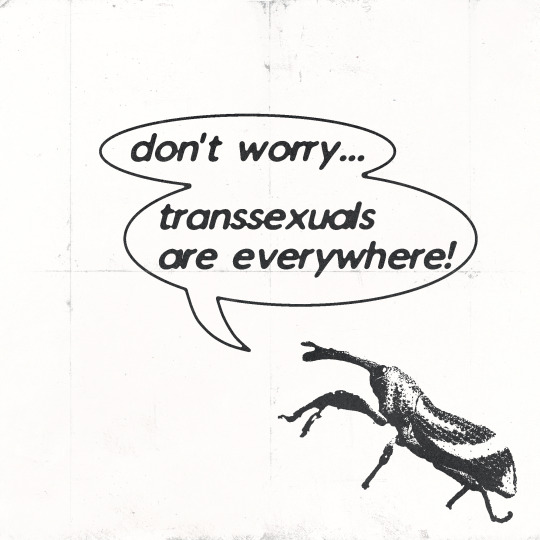
[Image ID: a black and white typography edit of a weevil with a speech bubble that says "don't worry... transsexuals are everywhere!" the entire image is edited to look photocopied and printed. /End ID]
click for quality (my shop) (instagram)
#true#weevil#blessed#jesus vs. mr. weevil#mr. weevil wins#weeeeeevil#i'm so exhausted#i think i might be going crazy from how eebi i am#but mmmmmh#sweet bedtime procrastination#ok i think it's time for bed now#any second#almost#jup#good night
4K notes
·
View notes